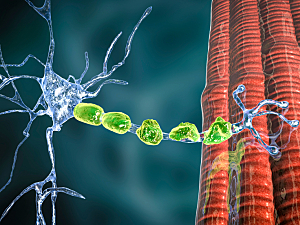Myelin oligodendrocyte glycoprotein antibody–associated disease (MOG-AD), a central nervous system (CNS) demyelinating disease, can present with acute disseminated encephalomyelitis, optic neuritis, and/or transverse myelitis. A live cell–based serum assay (Mayo Laboratories, Rochester, MN) is now available to detect MOG–immunoglobulin G1 (MOG-IgG1), the diagnostic biomarker for MOG-AD.
Giovanna S. Manzano, MD, a neuroimmunologist and neurohospitalist in the Department of Neurology at Brigham and Women’s Hospital and Massachusetts general Hospital, Marcelo Matiello, MD, a member of the division of neuro-immunology and comprehensive neurology at Massachusetts General Hospital, and colleagues determined positive predictive values (PPVs) of the assay in a real-world cohort. They discuss cutoff titers in Frontiers in Neurology.
Methods
The researchers identified 1,877 patients who underwent serum MOG-IgG testing with the Mayo assay at the Brigham or Mass General between January 1, 2017, and March 25, 2021. The records of 78 patients who had positive results were retrospectively reviewed by two neurologists for typical MOG-AD clinical features.
Patients who were seropositive for MOG-IgG had clinical features of MOG-AD, and that had no more likely alternative diagnoses were considered true positives. PPVs were calculated by dividing the number of true positives by all positive cases.
True Positives and PPV Analysis
Using a serum MOG-IgG titer cutoff of ≥1:20, 67 of the 78 patients with positive MOG-IgG1 results were determined to be true positives. The PPV was thus 85.9%.
Using a MOG-IgG titer cutoff of ≥1:40, PPV improved to 92.3%.
The PPV at MOG-IgG ≥1:20 was robust whether the test was ordered by a neuroimmunologist (PPV of 82%) or neurologist without neuroimmunology expertise (PPV of 94%) (P=0.17 for the comparison). Only one non-neurologist ordered a MOG-IgG test.
False Positives
11 of the 1,877 patients tested were deemed to be false positives, defined as being MOG-IgG seropositive with a titer of ≥1:20 but having a clinical syndrome inconsistent with MOG-AD and/or a more likely alternative diagnosis.
Three of the 11 patients with false-positive results had multiple sclerosis, and five had other neuroimmunologic conditions (autoimmune encephalitis, n=2; idiopathic hypertrophic pachymeningitis, n=1; IgG4-related disease, n=1; inclusion body myositis, n=1).
Notably, three patients had non-neuroimmunologic conditions (hypoxic ischemic brain injury, n=1; migraine with aura, n=2).
Applying to the Clinic
A titer threshold ≥1:40 improved the PPV for MOG-IgG in this study, but diagnosis of MOG-AD should not be ruled out in patients with titers of 1:20 without supplemental consideration of clinical signs. Determination of a false-positive result requires equally careful clinical interpretation.
